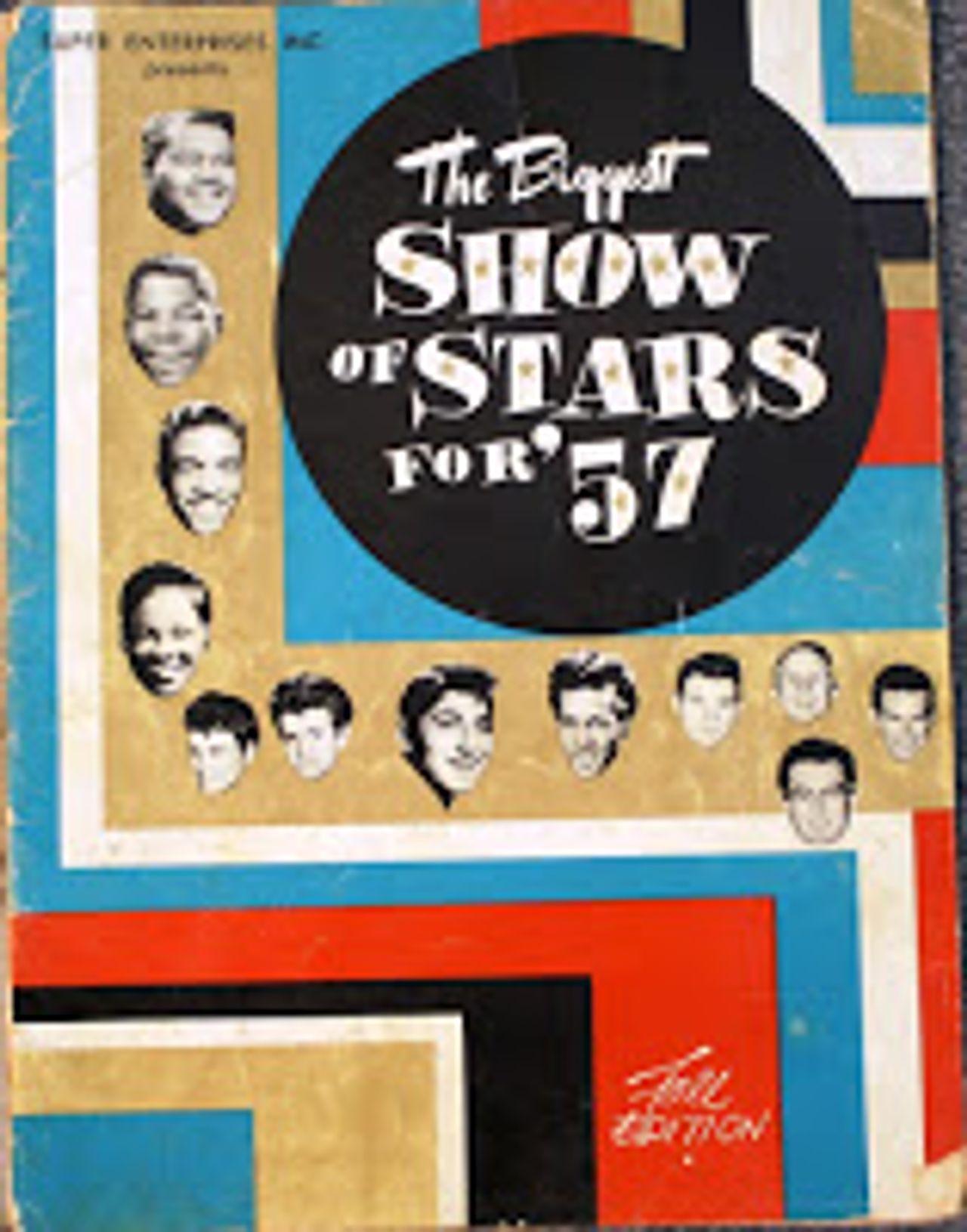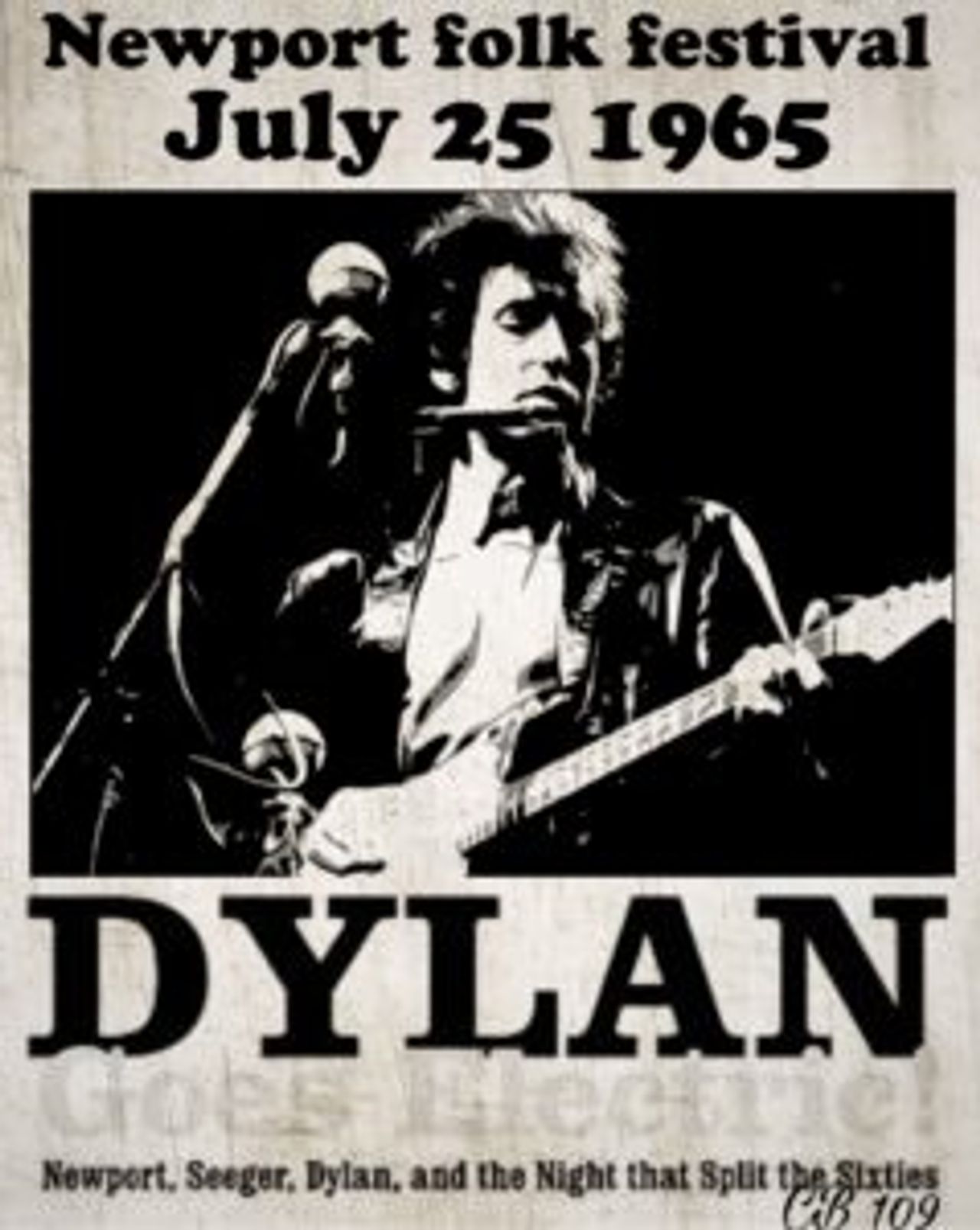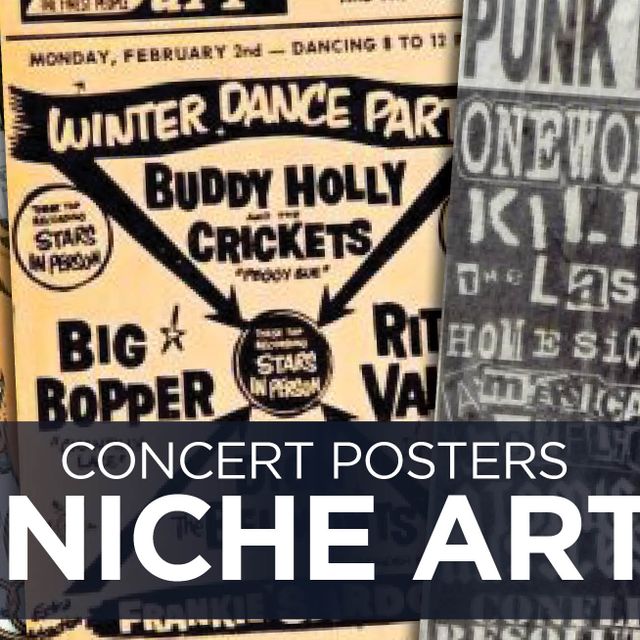The history of concert posters is vast. With every new music movement came new art and new printing techniques. From the bare-bones style of the early boxing posters to the eye-bending imagery of psychedelic, concert posters are works of art. They're also becoming an increasingly valued commodity in the collecting community.
Early Posters
Rock 'n' roll formed from blues, soul, and even country music. Rock 'n' roll saw its golden era from the mid-1950s to the early 1960s. Concert posters during this time emerged from other posters that were designed for different forms of entertainment. Examples are circuses and Grand Ole' Opry shows. In addition, big band jazz performances.
These posters were created on cardboard and were not especially beautiful. Though they are considered rarities by today’s standards, they were merely designed to catch the eye of passersby. These early posters were far from the art form they would later evolve into.
Letterpress Printing
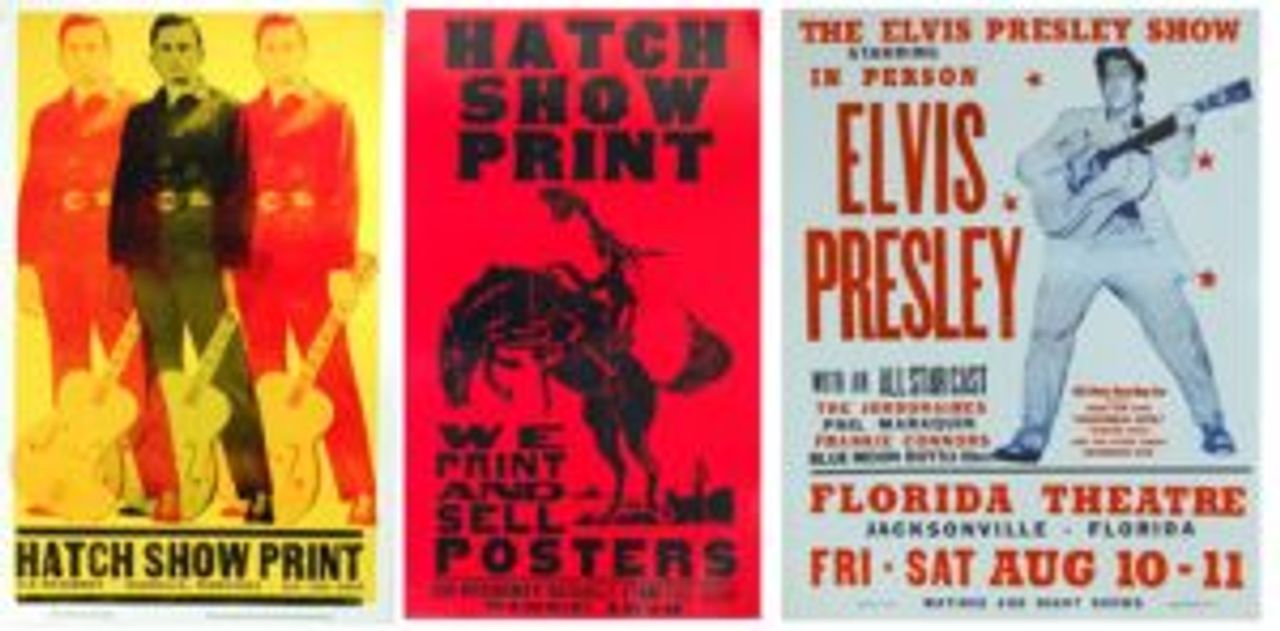
Letterpress printing is the process of pressing paper onto wood or metal letters that are covered in ink. This form of printing is Hatch’s legacy. Hatch’s first poster was not created for a concert. Tt advertised a lecture about freedom for African Americans given by Henry Ward Beecher. If you didn't know, he was the father of famous author Harriet Beecher Stowe. This particular lecture took place at the Grand Opera House in Nashville. Later, this location would become known as the Grand Ole Opry. Years later, Hatch went on to create posters advertising big band and country music shows, becoming essential in advertising for the Opry.
Globe Poster
Globe Poster in Baltimore, Maryland, was also creating their own letterpress posters at this time. The company got its start by creating film posters. Later, it went on to produce posters for shows featuring the likes of Etta James and B.B. King. In the mid-1950s, Globe began incorporating Day-Glo ink into its posters. This enhanced their visibility in the dark and from a distance. It and was also cheaper and easier to use.
The use of Day-Glo ink created an iconic flair for Globe posters. It also set a new standard for posters in general. While Globe’s Day-Glo prints obtained an association with African American artists, Hatch’s prints used a more “American Gothic” style. They then began to be associated with country music and white rock ‘n’ roll.
In fact, Hatch was responsible for early Elvis Presley posters. While Elvis posters were useful tools for concert advertisement in the early days of his career, these posters are few and far between, and nearly impossible to come by today. The same goes for The Beatles, another essential pillar of early rock ‘n’ roll. This is perhaps due to the fact that despite these artists’ vast influence, their careers spanned a relatively short portion of rock history.
Early Rock 'n' Roll
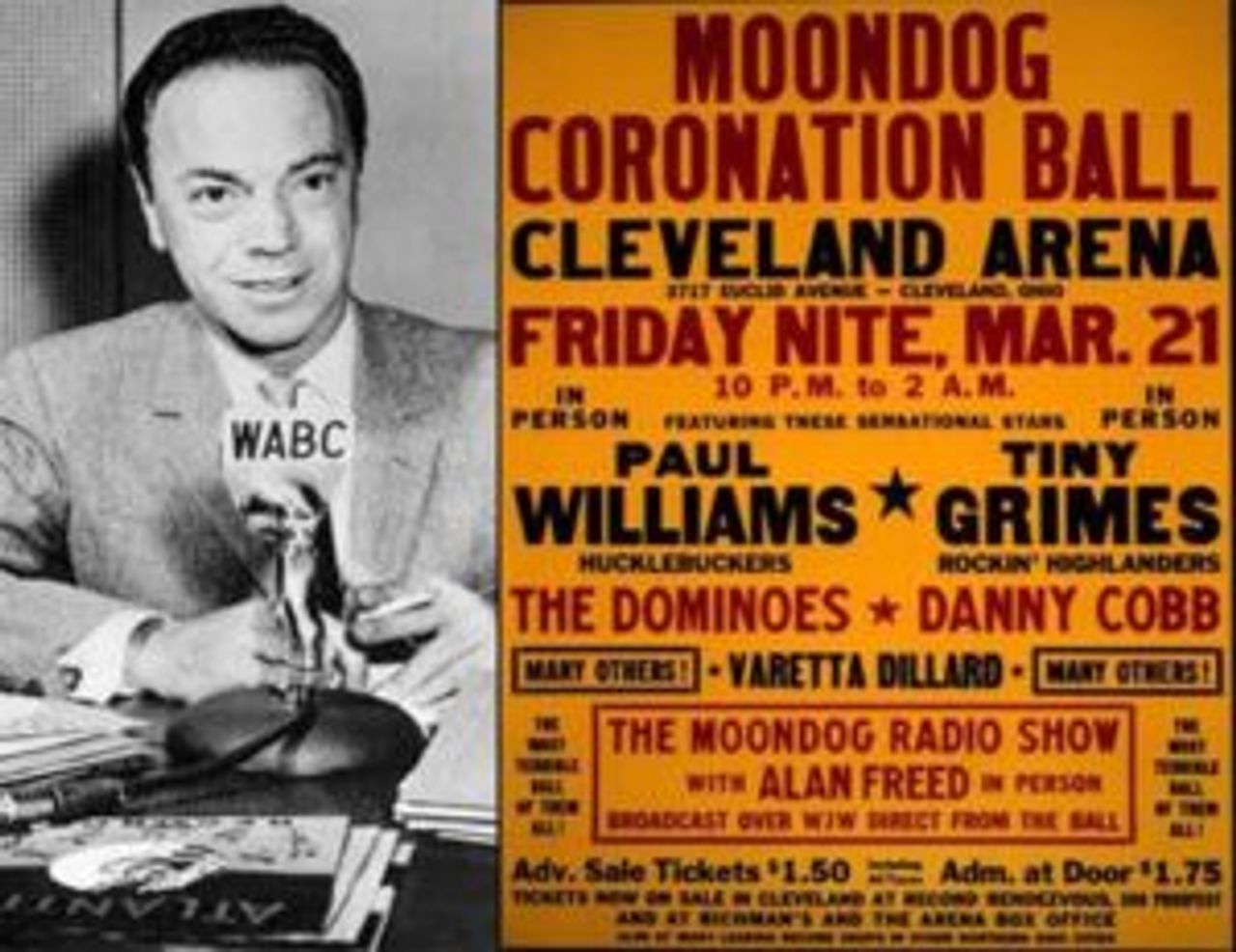
Freed produced the first major rock show in 1952, entitled “The Moondog Coronation Ball” at the Cleveland Arena, which was eventually canceled when more than twice the amount of people showed up than capacity allowed. However, Freed then made the move to New York City, where he began to put on more rock events and tours that he would act as emcee for. Though these tours did not originally produce many posters, what posters did come from them were mainly used to advertise a tour as a whole, rather than a specific venue.
The Lineup
These shows featured artists such as Chuck Berry, Fats Domino, and Jerry Lee Lewis. Other tours featuring large casts of all-star musicians were born out of Freed’s. Some independent companies began to produce shows in the mid-1950s and early 1960s that featured both black and white rock ‘n’ roll artists. Many of the posters for these tours were created by Globe Poster, including The Biggest Show of Stars in the spring and fall of 1957. Posters advertising African American artists continued to be primarily produced on letterpress up until the 1970s. That's when silk-screen printing became more common. It was only then that posters advertising these artists took on a more modern appearance.
While the Fillmore Auditorium is most prominently associated with Bill Graham and psychedelic concert posters, it operated for decades prior primarily featuring African American entertainers. Even when Graham took over in 1966, dances regularly took place at the Fillmore as well as similar venues in the Bay Area, featuring Motown legends such as Marvin Gaye, and soul artists such as Otis Redding.
The Posters
These shows were typically promoted using the traditional “boxing style” letterpress poster, produced by Tilghman Press in Oakland. These posters were produced in very small quantities and, subsequently, are extremely rare today. Early rock ‘n’ roll and African American music continued to gain traction through the 1960s when it was reinvigorated by the likes of Wilson Pickett, Ike, and Tina Turner. These artists played a major role in the evolution of 60’s rock. Posters from this era were still created by Globe Poster and Hatch Show Print, as well as Colby Poster in Los Angeles. Many posters focused on the music craze “The Twist”, popularized by Chubby Checker.
Folk Music
Folk music as we know it today originated with individuals like Woody Guthrie in the 1940’s and 50’s and popularized in the 1960s by the likes of Bob Dylan and Joan Baez. It came from country and blues artists and was fueled by the civil rights movement. Groups such as the Freedom Singers established a form of folk music used as an act of protest. It was often performed at events such as sit-ins. Often, this type of folk music was performed in coffee shops and small clubs across the United States. The posters advertising these shows were quite simple. they generally featured words, photos, and simple graphics.
Many posters came out of the popularization of folk festivals. The Berkeley Folk Festival, which began in 1958 and lasted ten years, featured artists such as Pete Seeger, Doc Watson, and Joan Baez, and went on to feature early psychedelic bands such as Jefferson Airplane. The Newport Folk Festival began in 1959 in Rhode Island. It was the first place that Bob Dylan went electric. An annual folk festival held at San Francisco State College featured a pre-Grateful Dead Jerry Garcia and Janis Joplin.
The 5th Year
The poster for the fifth year of this festival was created by Michael Ferguson of The Charlatans, a band at the forefront of the psychedelic music scene. This poster featured similar fonts and lettering to later psychedelic concert posters, a completely different style than the posters created for festivals such as Newport Folk, which sported simple fonts. Additionally, numerous posters were created to advertise Bob Dylan concerts, including a rare piece by Eric Von Schmidt created for a 1965 tour featuring Dylan and Joan Baez. Dylan didn’t care much for the poster, so very few were printed.
British Invasion - 1963-1966

The poster advertised the Royal Command Performance at the London Palladium, and simply featured a photo of the Beatles standing and sitting by a blue brick wall with simple lettering underneath. It was printed in the United States and widely distributed. Two other Beatles posters are worth noting; the one advertising their 1965 Shea Stadium show, and the one advertising their final concert at Candlestick Park in 1966.
Shea Stadium Poster
The Shea Stadium poster features the same “boxing style” artwork as the Hatch and Globe posters and was not extremely visually appealing. However, the Candlestick Park poster featured a different style, as it was created by Wes Wilson, an artist who went on to create some of the first psychedelic concert posters. It is more colorful and features a more interesting art style. Because the Beatles had such a short touring career, there are few posters from these shows, and the ones that still exist are extremely rare. The British Invasion and The Beatles were what eventually gave way to the psychedelic era.
Psychedelic Concerts Posters and San Francisco - The Family Dog
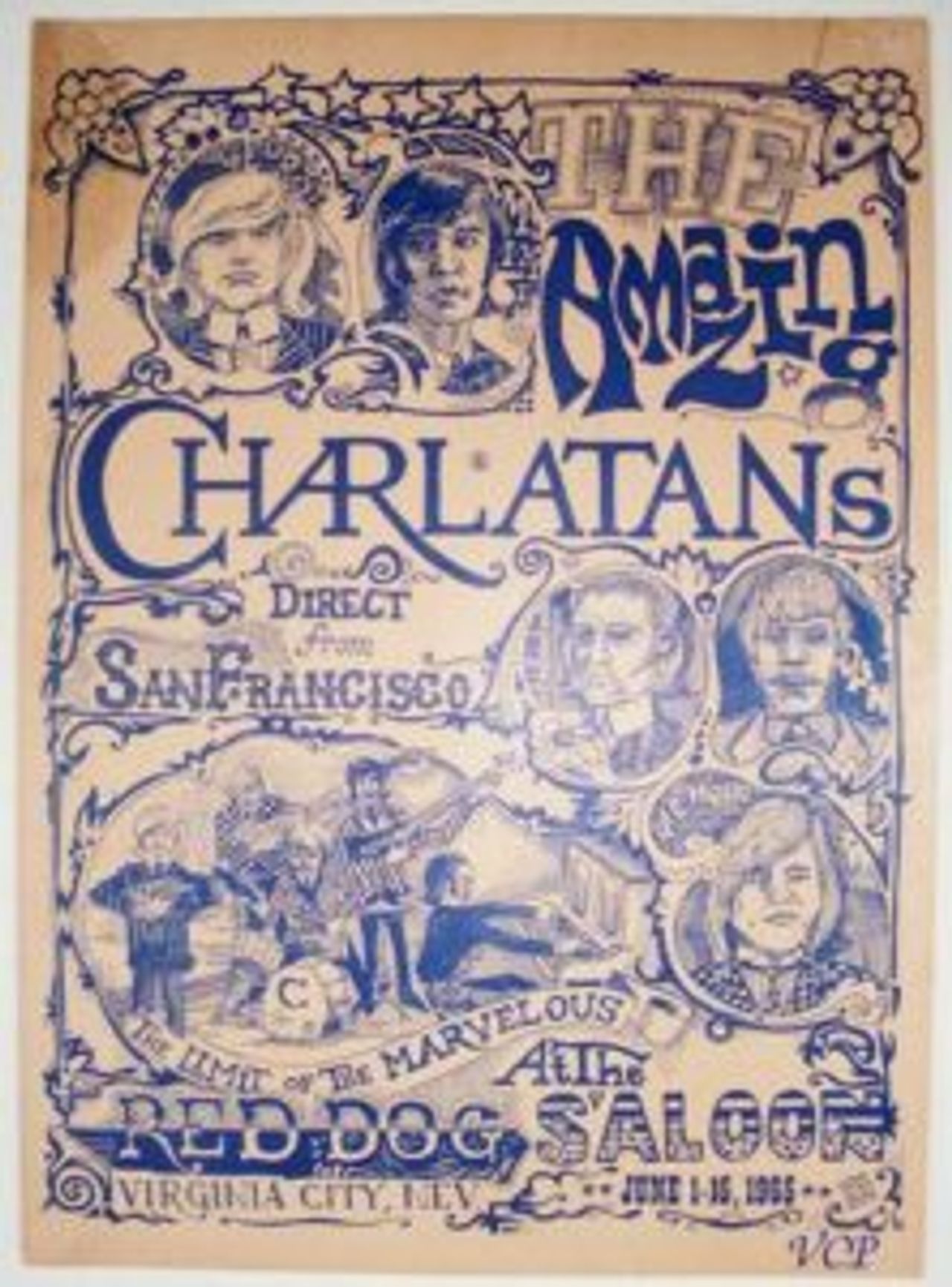 (c) George Hunter and Michael Ferguson
(c) George Hunter and Michael FergusonThe first concert poster of the psychedelic era was created in the summer of 1965 to advertise The Charlatan’s shows at the Red Dog Saloon in Virginia City, Nevada. The band famously auditioned for the gig while on LSD, and the run of shows ushered in the psychedelic era.
The poster was given the name “The Seed” and was created by band members George Hunter and Michael Ferguson. The shows at The Red Dog became an inspiration to bring psychedelic music to San Francisco, where a group of people known as The Family Dog began to take an interest.
The Family Dog
The Family Dog included artist Alton Kelley, who began to design posters for rock dances that the group would put on. TFD printed handbills advertising the event, which are rare to come by today, as only a couple hundred were printed and even less preserved. After a few of these dances and handbills, Chet Helms appeared on the scene.
Helms managed the band Big Brother and the Holding Company and soon began to manage The Family Dog. He approached Bill Graham about producing shows at the Fillmore, and for a few months, The Family Dog shared the space with Graham. Artist Wes Wilson created the posters for these shows along with Helms, and psychedelic concert posters began to be seen as true art. Thus began the numbered series of The Family Dog posters. The series of 147 posters created over a two-year period.
Watch for Those Handbills
Posters 1-41 in the series were printed both as posters and handbills, the handbills being extremely rare finds today. After 41, the handbills were replaced with postcards. Wes Wilson created eleven of the first twelve posters in the series while the Family Dog was putting on shows at The Fillmore, and as they moved to put on shows at the Avalon Ballroom, Stanley Mouse took over. Mouse and Alton Kelley collaborated on creating some twenty-six posters for the Family Dog’s Avalon Ballroom shows, including iconic pieces such as “Zig-Zag Man” and The Grateful Dead’s “Skull & Roses”. These posters became central to the movement.
Artist Rick Griffin then came along and joined The Family Dog. He'd been inspired by Mouse and Kelley’s posters. He began creating posters in the numbered series. Griffin had some experience creating psychedelic posters. He’d produced a poster for the Jook Savages art show in 1967. Also, the poster for the Human-Be-In. This was an event in Golden Gate Park that began the “Summer of Love” the same year. Though these first few pieces were in black and white, Griffin’s art shifted to experiment heavily with color. This separated them a bit from Mouse and Kelley’s pieces.
Victor Moscoso
Another artist who contributed heavily to TFD posters was Victor Moscoso. As an art student from New York, Moscoso was fascinated by The Family Dog’s early work and decided to start creating concert posters. He had to forget much of his art school training in order to create psychedelic posters featuring vibrant coloring and large, psychedelic lettering designed to be difficult for the viewer to read.
In 1967, Jack Jackson took over art direction for TFD. Seeing the surplus of posters they had, he began to contact distributors about selling them. He also created a mailing list for individuals interested in obtaining posters for themselves. As interest from music companies grew, TFD began to reprint some of their posters. While the original posters always hold the highest value, many of these reprints are rare and valuable today as well.
Psychedelic Concert Posters - Bill Graham
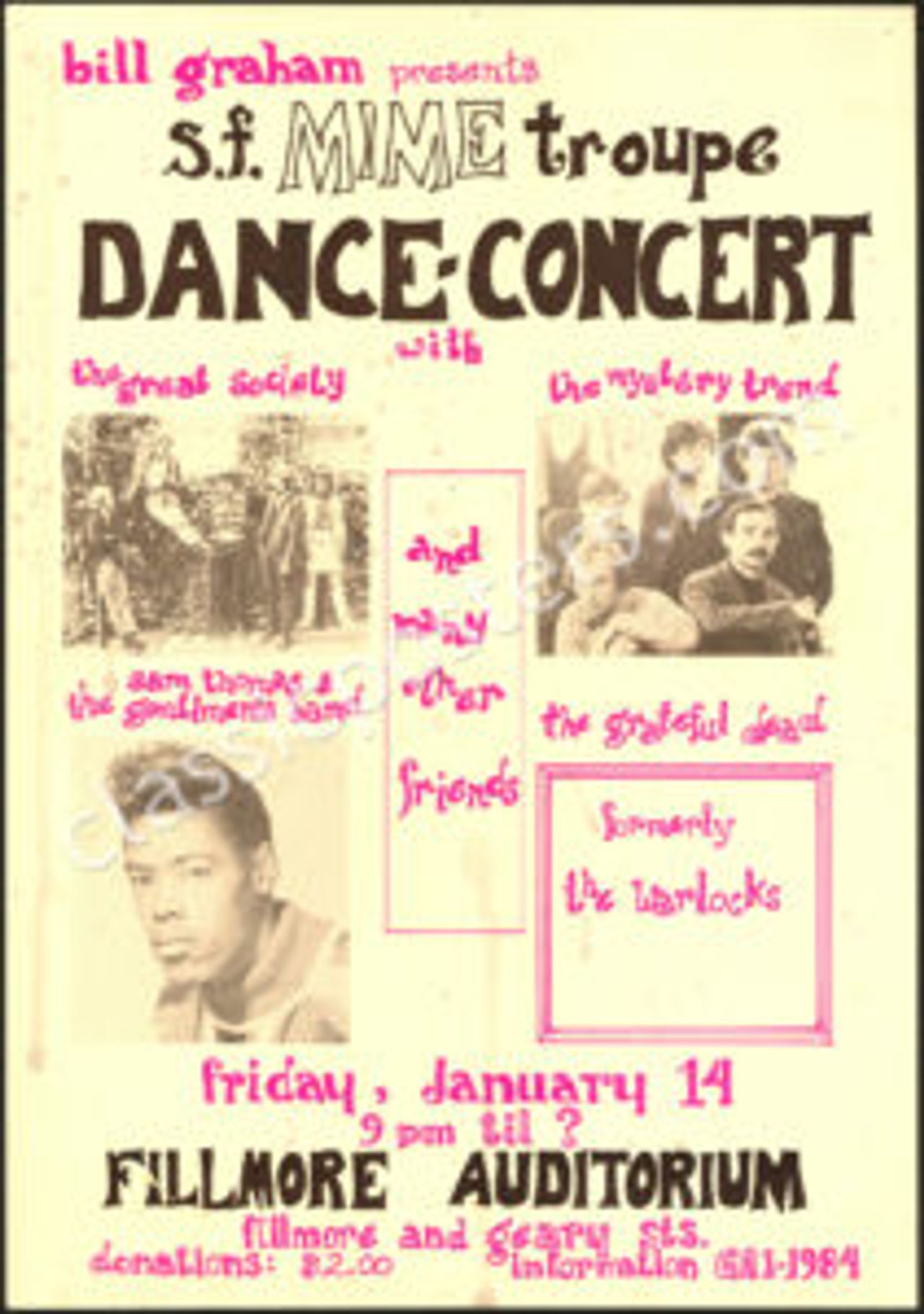
The poster for this show is the only one in existence to feature the band’s old name. Later that same month, Graham assisted in producing the Trips Festival. This festival brought San Francisco’s underground art scene together and featured music along with experimental art. Performances by Big Brother and the Holding Company and The Grateful Dead at the festival went down in history, and it was essentially the launch of the Grateful Dead’s success.
Just the Beginning
Though there was a poster for the festival, it was a long way off from what psychedelic posters would become. Two weeks later, Bill Graham took over the Fillmore Auditorium. Bill Graham’s poster series lasted a few years longer than The Family Dog’s and consists of nearly 300 posters. It also represents a bit of a wider range of events and features more artists. While many of The Family Dog artists also worked on Bill Graham’s series, including Wes Wilson, Rick Griffin, Alton Kelley, and Stanley Mouse.
Nearly all of the posters in Bill Graham’s series were also printed as handbills. Many of them are identical to their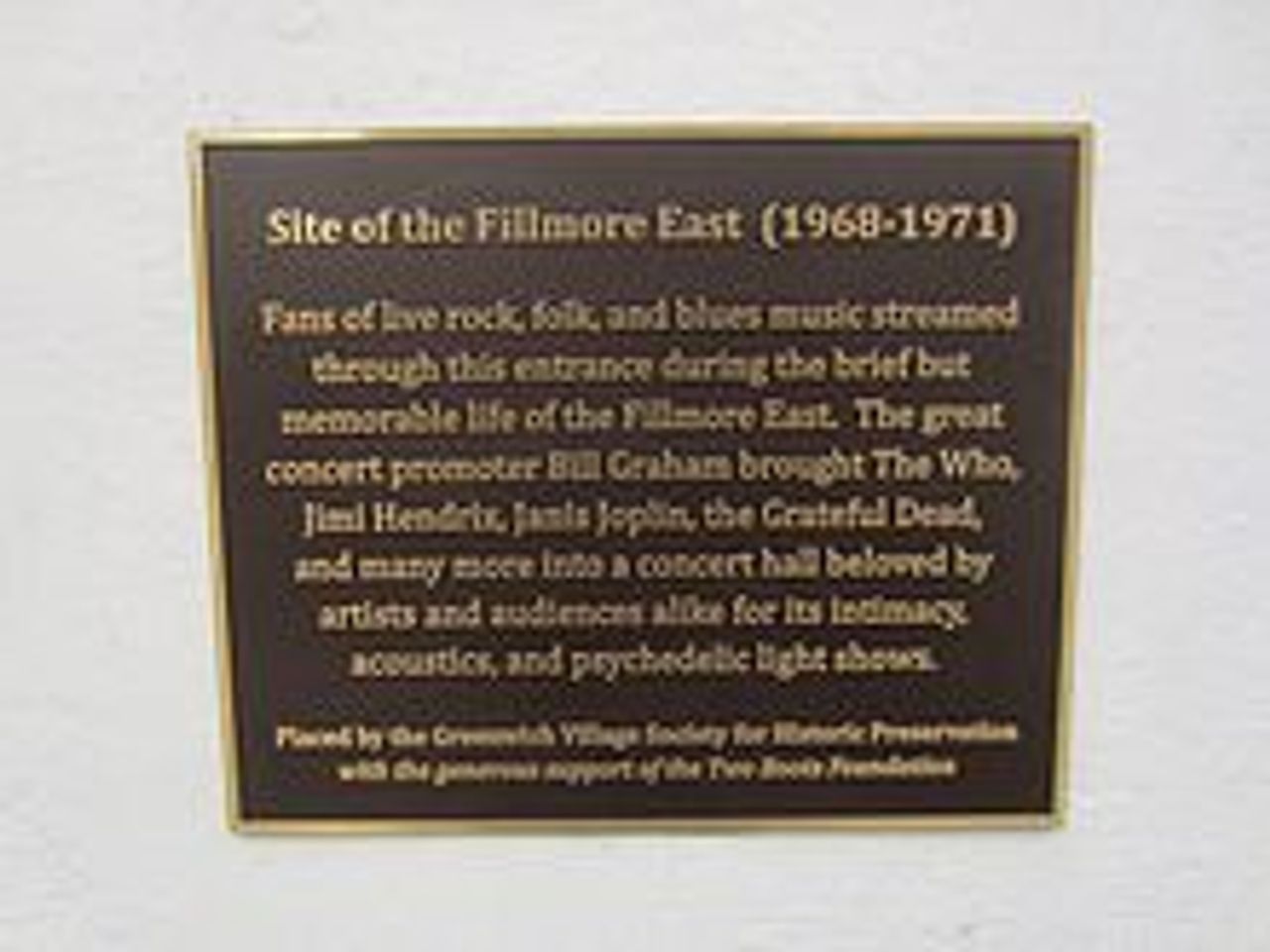
Handbills Take Over
Once this became the standard, the older handbills were reprinted in this format as well. In the summer of 1967, the tickets to Graham’s shows began to feature the posters with color variations that corresponded with each night of the same run of shows, which helped solve issues related to counterfeit tickets.
In 1968, Graham opened the Fillmore East in New York City, a venue designed as a companion to the Fillmore in San Francisco. Though the posters for shows at this venue were not as fleshed out as San Francisco posters, there were still several iconic pieces that came out of it. These included posters featuring Jimi Hendrix, Jefferson Airplane, The Who, and Frank Zappa. Graham had a few other ventures outside of San Francisco, including a New Year's Eve show in Los Angeles in 1969.
The poster accompanying this show featured Graham’s real name: Wolfgang Grajonca. Perhaps the rarest Bill Graham numbered poster of all is the BG 74, which advertises a run of shows in Toronto, Canada in 1967 featuring the Jefferson Airplane and The Grateful Dead. In 1971, Graham closed both Fillmore West and East and the poster series associated with the venues ended.
Other Posters of the Psychedelic Era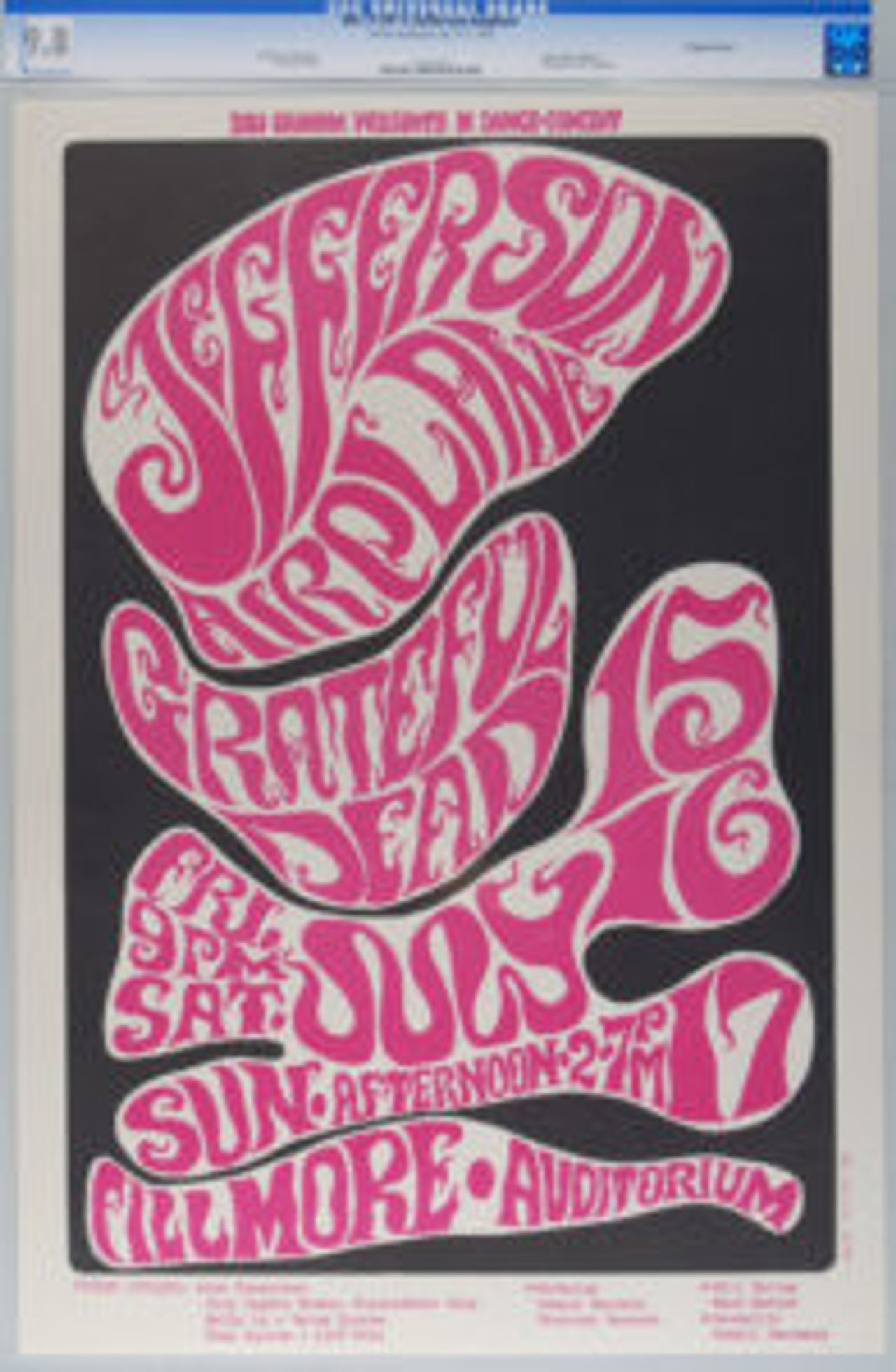
The Family Dog and Bill Graham’s series of posters are among the most collected and iconic of the psychedelic era. Still, many other posters for shows outside of The Avalon and The Fillmore were created during this time in San Francisco. From 1965 until 1972, shows at The Matrix were promoted via handbills and featured bands such as Big Brother and the Holding Company, Jefferson Airplane, The Grateful Dead, and Quicksilver Messenger Service.
Other Venues
Other venues associated with early psychedelic concert posters in the bay area included The Greek Theater, the Berkeley Community Theater, The Oakland Auditorium, The Ark, and the Continental Ballroom. Psychedelic concert posters were also being created for concerts outside of San Francisco all over the state of California, as well as in the Pacific Northwest, Hawaii, Texas, Chicago, and Detroit. Several important pieces were also created in Canada and Europe, though San Francisco remained at the heart of the psychedelic poster scene.
The 1970's - Beginning of Commerical Rock
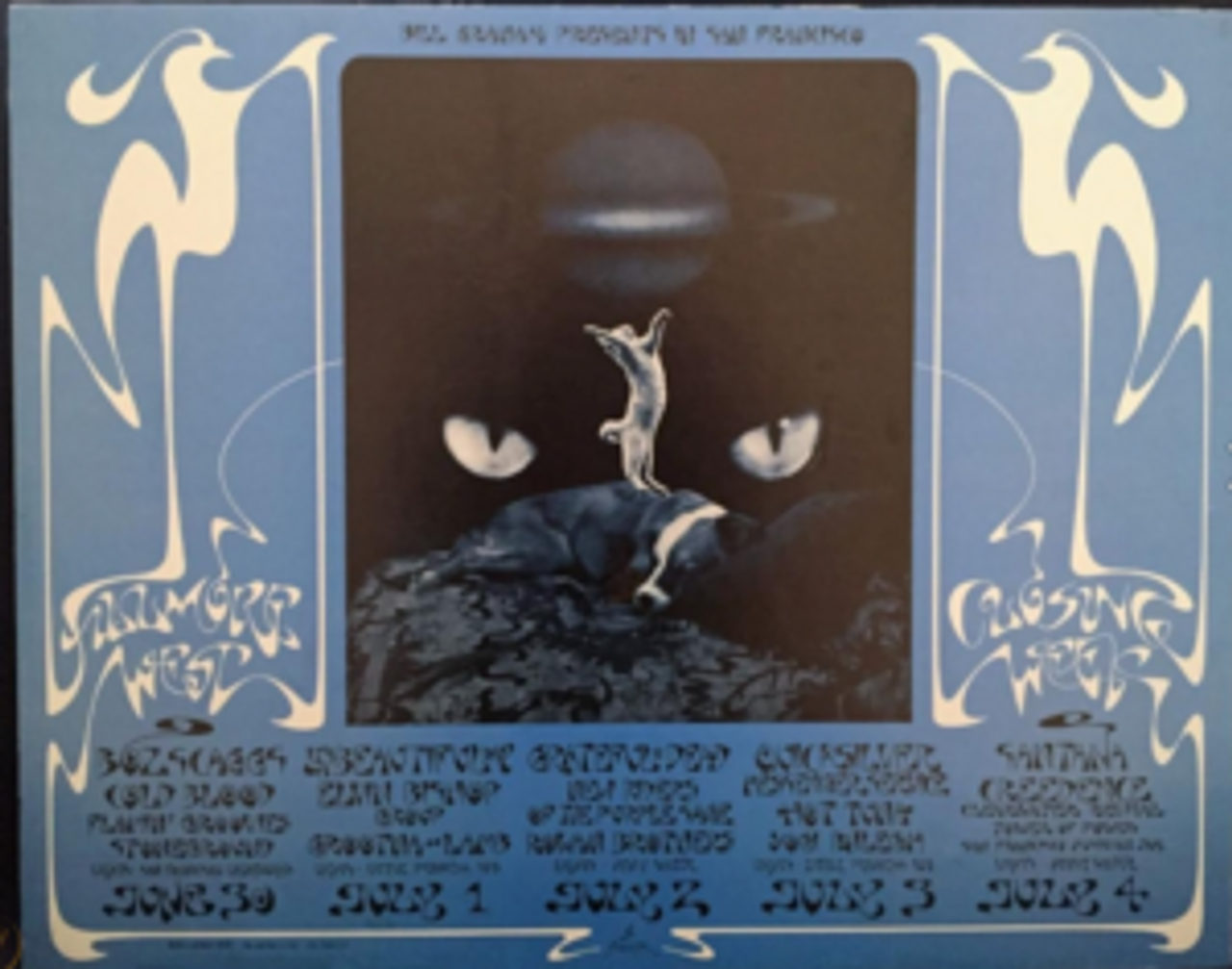
Singer’s art style focused on collage work and thin lettering. At this time, a new era of both music and concert posters began. Rock music became more monetized. Shows began to be advertised more through mass media than posters. Though the number of posters created as advertisements dwindled, the art form persisted.
A Friendlier Look
Posters became more polished and less easy-going. This corresponded with the music happening at the time. Poster artists began to create artwork for t-shirts and albums. An example is Stanley Mouse’s artwork. It was used for The Grateful Dead’s Europe ‘72 album, entitled “Ice Cream Kid” and “Rainbow Foot”. Also, It adhered to the psychedelic art style of the 1960s. Other important Mouse and Kelley art from this era include Blue Rose. This was created for the Grateful Dead’s performance at the closing of Winterland Arena. Additionally, for Kelley’s poster for the Grateful Dead’s show in Egypt. Only a thousand were ever produced, making it quite the collector's item. Aside from classics such as these, most concert artwork appeared as advertisements in papers.
Randy Tuten and David Singer designed most of these advertisements for Bill Graham’s events. These were now taking place at larger venues. Tuten also designed posters for large shows such as these featuring bands such as Led Zeppelin, The Rolling Stones, and Pink Floyd. One notable production was The Last Waltz event in 1974. This was the final show of the Band. The poster for this event, designed by artist Croci, is a significant departure from the psychedelic art style. This is indicative of the changing times. Another important piece of rock art from this era was the laminated backstage pass.
New Wave and Punk Posters
Poster art’s importance was revived with the rise of new wave and punk music in the mid-1970s. As was the case with early concert posters, posters advertising punk shows were often posted on streets throughout various neighborhoods. The art style for these pieces reflected the music they were advertising. The music was far different from the mainstream, and so was the artwork.
They embraced the “boxing style” from the 1950s and early 1960s, simple yet loud. They weren’t the same works of true art as the posters from the psychedelic era. This is because the music was heavily inspired by a do-it-yourself attitude. These were meant to inundate passers-by who would encounter them on the street rather than be collected and put on your wall. Most new wave posters were black and white, and often produced inexpensively.
Sanfran for the Win

He developed a character called “Pineapple Man.” This creature appeared in the band’s artwork. Another San Francisco band that was considered to have excellent poster art at the time was Crime. Most of their work created by James Stark. Another important West Coast artist of the time was Su Suttle. Suttle designed poster art for bands such as Talking Heads and The Ramones. Suttle was one of the few artists from this scene to be celebrated the same way as the psychedelic artists from the 1960s. The art mainly featured headshots and lettering pieced together in a collage-like way. She called this style “neo-psychedelic”.
Punk Art
Punk music artwork was even more challenging to the viewer. The style came out of the English mod and skinhead movements. It then made its way to New York, Los Angeles, and of course, San Francisco. Punk art was street art at its core. Many punk flyers were taken down from the streets. People saved them due to their visually intense nature. Nearly all of these pieces are handbill-sized. Most were printed in local instant print shops, or by Xerox machines. Among the most recognizable punk posters from San Francisco are Jo Jo Planteen’s Alter Boys pieces. Other punk clubs in the Bay Area that are associated with notable poster art include Sound of Music, Tool & Die, and Temple 1839. Bands such as the Dead Kennedy’s regularly played.
Outside of San Francisco, punk poster art grew. Los Angeles boasted bands such as Black Flag and X. New York was home to CBGB, which hosted acts like The Ramones, Patti Smith, and Television. CBGB didn’t primarily rely on posters to advertise its shows. Still, there were a number of posters and handbills created for their events. In Seattle, most punk posters were created by band members and used heavily as street art and advertisements.
Modern Poster Art
Concert posters continue to be created, sold, and collected today. And, on an even wider scale. However, they have morphed from advertisements into concert merch. Most modern gig posters that are posted in music venues are created on computers. Thus, they lack the "true" artwork of early poster advertisements. Flyers advertising concerts are often still posted around big cities. However, a majority of posters collected by music fans are sold at concerts as merchandise. Most of these are still printed in limited numbers. They are sold and traded among concert-goers. This makes them collector’s items.
In the 1980s, silkscreen prints produced by artists such as Frank Kozik gained popularity. This led to screen printing becoming the most prominent form of poster. Kozik is often credited with reviving concert posters as an art form. He began in Austin, Texas. He'd create black and white posters for the city’s underground scene. He later went on to design pieces for bands such as Nirvana and Pearl Jam. In the 1990s, artists such as Chuck Sperry, Emek, and Jeff Wood began to dominate the poster scene.
Retro Meets Modern
These artists use the psychedelic style of the ’60s. While adding their own modern flair, of course. They created poster art for a wide variety of bands and musicians. Jam bands in the spirit of the Grateful Dead, modern rock groups, and pop music artists alike enjoy the style. Throughout the history of concert posters, perhaps the thread that remains the most consistent is the Grateful Dead. From the 1960s to today, they’ve been responsible for posters in every decade. Their fans are among the most avid collectors.
Here Comes the Modern Era
 (c) Chuck Sperry
(c) Chuck SperryThe idea of modern concert posters as collector's items has led to a whole new market for collectibles. Now, there are several online marketplaces geared specifically toward buying and selling concert posters from history. Since authenticity is essential to collectors, companies such as CGC consistently rates posters. Posters evolve over the decades. They only continue to evolve as items of great value to collectors and music lovers alike.
